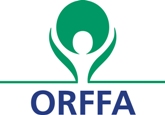15th Orffa Symposium on Animal Nutrition well attended

At Thursday 11th of June Orffa Additives organised for the 15th time its annual animal nutrition symposium in Etten-Leur, The Netherlands.
About 120 attendees from feed industry and research gathered to get updated on latest research performed or sponsored by Orffa and its partners.
Opening of the day was done by CEO of Orffa International Holding B.V., Dr. Ir. Eddy Ketels: “Orffa values technical and scientific support to its customers. Each year a substantial part of the budget is spent to find new applications or to give evidence and fundamental explanations to the mode of action of our products. With a staff which consists of more than 50% of people with Bachelor or Master Degree, Orffa is capable of matching research results to the needs of its customers. Our product managers in the field have a high level of experience and are backed up by highly scientific central support. Orffa has activities in all major feed producing countries in the EU. It is however the ambition of Orffa not only to grow in the EU market, but also to be a highly valued, technical partner for customers beyond.”
Amino acid requirements
During the morning several subjects regarding amino acid requirements in pig nutrition were presented. The research presented was performed in close collaboration with Ajinomoto Eurolysine. Paul Bikker from Schothorst Feed Research focussed on tryptophan requirements of growing pigs. Requirements of tryptophan have been subject for much research, allowing nutritionist to optimize their diets for piglets. In this dose response study it was shown that also in diets for growing pigs there is a clear commercial interest for tryptophan inclusion. Depending on the model used, the optimal AID Tryptophan/Lysine levels were calculated at 19% and 22% for the linear-plateau model and the quadratic model respectively.
New tool: Evapig
Etienne Corrent (Ajinomoto Eurolysine, s.a.s.) introduced two new tools for evaluation of pig feeds and raw materials. Evapig is a model which calculates the energy, amino acids and phosphorus values of ingredients and diets for growing and adult pigs according to actual composition. This free software is available online. The Formulator’s Handbook describes a complete and detailed overview of amino acid profiles in a wide range of feedstuffs used in common European feed formulation. Feed formulators can use this extensive knowledge based on more than 500 analyses for all 20 amino acids to predict, interprete and compare table values and results of analysis to estimate the nutritional value of their feed ingredients. Table values and predictive regressions are also available online.
L-valine for piglets
Exciting innovative information was presented by Dr. Jaap van Milgen (INRA). He presented the opportunities for using L-Valine in diets for piglets. Just one week after EU approval by EFSA for using this new feed use amino acid produced by Ajinomoto Eurolysine, the public was informed about the requirements and practical applications. Based on a series of trials the valine requirements were researched and also interactions with other branched-chain amino acids isoleucine and leucine. This gives new opportunities for feed formulators to further decrease crude protein and to increase balanced amino acid profile in diets and thereby create positive effects on both animal performance as well animal health and environment. Jaap Van Milgen concluded that the requirement for SID Isoleucine/Valine in grain-soybean diets is most probably not over 50%, an excess of Leucine might have an extra negative effect in Valine-deficient diets, and finally he concluded the requirement for SID Valine/Lysine is at least 70% for piglets.
Nutritional approach footpad lesions
After lunch focus changed form pig nutrition to poultry. Dr. Teun Veldkamp, Senior Poultry Researcher at Animal Sciences Group of Wageningen University focused on feed measurements to overcome problems with implementation of animal welfare issues by legislation. Focus of his speech was foot pad lesions and ammonia levels in the stables. Special attention was given to low crude protein and to feed additives which allow reduction of ammonia or which could improve litter quality and footpad lesions. The inclusion of clinoptilolites in particular seems to be able to improve both.
An update on new insights and trials regarding the sporeforming probiotic Calsporin (Bacillus subtilis) was given by Arno van der Aa, technical manager at Orffa. New fundamental research was shown explaining mode of action and effects on microfloral balance. Afterwards an update on all trials performed within EU in last years and across the world was shown. In this overview consistent positive results on growth and feed conversion in more than 25 trials was presented. Most of this data have been published or are subject to submission.
Beta glucans against enteritis
The day was ended with a very interesting speech of Laura Star, poultry researcher at Schothorst Feed Research. She focussed on the use of beta-1,3/1,6 glucans (Macrogard) in relation to chronic enteritis in laying hens. Chronic Enteritis is a fairly new and hard to tackle disease, affecting approximately 10% of Dutch laying hen populations and can add up to costs of €2/hen. In a governmental supported project several feed ingredients and additives with potential effects were tested, of which only aspirin could give satisfying results. However, aspirin is not suitable for practical applications due to withdrawal period. Dietary inclusion of beta-1,3/1,6 glucans (MacroGard) gave similar results as compared to the aspirin treatment and therefore currently seems a suitable practical application in dealing with chronic enteritis.
Related website:
Orffa
Related articles:
Healthy gut is key in targeting necrotis enteritis











